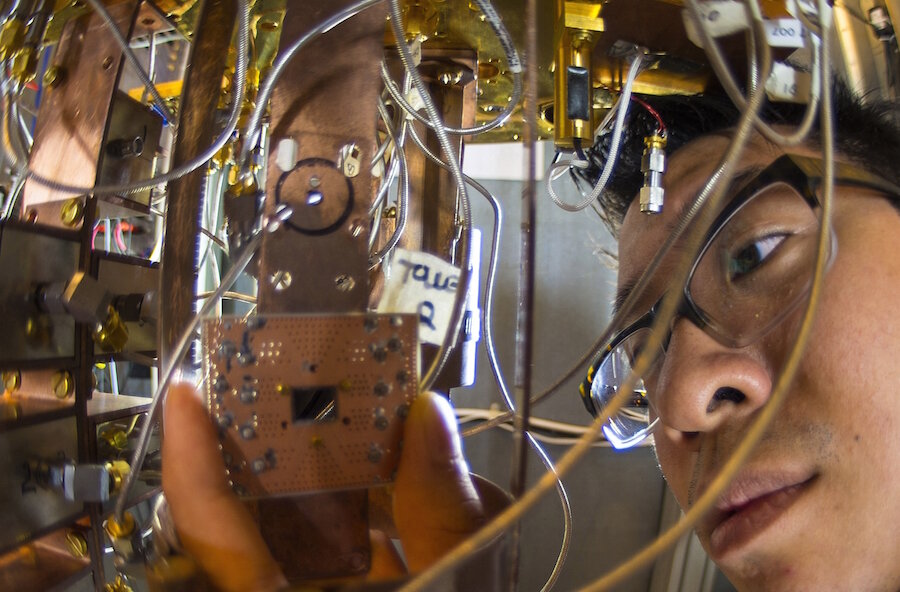Could a Fredkin gate be the next quantum leap forward for computing?
Loading...
The laundry list of obstacles to developing quantum computers just got a little shorter with a recent scientific breakthrough.
Scientists have built a new computer chip capable of overcoming one of the key obstacles to building quantum computers. The quantum Fredkin gate is a vital piece of quantum computing that was previously too complex to build, but scientists have found a way to simplify the process.
By simplifying one of the basic parts of a quantum computer, the team behind the breakthrough hopes it will make building functional quantum computers more feasible and unlock the massive potential behind the advanced computers.
"Similar to building a huge wall out of lots of small bricks, large quantum circuits require very many logic gates to function. However, if larger bricks are used the same wall could be built with far fewer bricks," said Dr Raj Patel, one of the lead scientists behind the breakthrough.
Quantum computers are far more complex than traditional computers. The Christian Science Monitor’s Jeff Ward-Bailey described the difference in December:
Super computers use the “traditional digital design in which each bit represents either a 0 or a 1. But quantum computers, which were first proposed in the 1980s, have atom-sized bits that can represent 0, 1, or a ‘superposition’ of both 0 and 1 at the same time.”
The result is quantum computer circuits that need to incorporate a vast amount of smaller parts in order to function.
Fredkin gates are just one part of a quantum computer circuit, a place where two quantum bits can be changed or swapped depending on a third value. But to build one Fredkin gate requires five logic operations. Add in the required amount of Fredkin gates and soon a circuit would be bustling with far too many components to be realistically made.
Scientists from Griffith University and the University of Queensland found a way to construct Fredkin gates while simplifying the amount of logic operations needed. The team used particles of light.
"The research team used the quantum entanglement of photons – particles of light – to implement the controlled-SWAP operation directly," the press release states.
Simpler Fredkin gates will hopefully mean simper quantum computer circuits.
What’s makes quantum computing worth the difficulties?
"The allure of quantum computers is the unparalleled processing power that they provide compared to current technology," said Dr. Patel.
Scientists, governments, and large corporations seek powerful computers for a number of activities from modeling air traffic control and molecular compositions to predicting weather events and cracking passwords. The more complex the operation and the more independent variables need to be simulated, the more processing power is required.
Tianhe-2, the world's current fastest supercomputer can do 34 quadrillion floating-point operations a second and takes up 8,000 square-feet of space. [Editor's note: An earlier version misstated Tianhe-2's performance.]
A quantum computer would be able to solve in one second a problem that could stump a traditional computer for 10,000 years, Hartmut Neven, director of engineering at Google, said.








